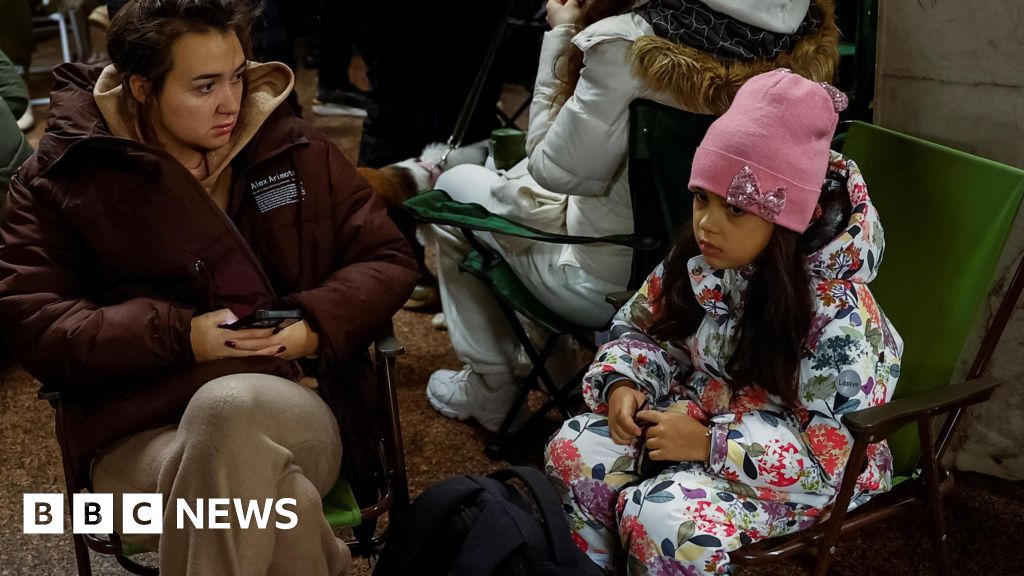ARTICLE AD BOX
By Katy Watson
BBC South America correspondent
Image source, Getty Images
Image caption,More than 100 people have died in landslides in the Brazilian city of Petrópolis
When the rainstorm hit Petropolis last week, 41-year-old Carine Santiago was nervous. Brazil is a country used to tropical downpours and people here take rainy season in their stride. But even by Brazilian standards, it was intense.
The town saw a month's worth of rain - 240 mm (9.4 in)- in just two hours.
"The rain came down so hard," Carine says. She was trapped at work, while her daughter was at home. "I had no idea that where I lived it was even worse."
At home, 13-year-old Mariana had a narrow escape.
"I looked up and my house started shaking," she says. "I ran up to my neighbour and you could see the entire mudslide from there, it was like a waterfall."
Their house was destroyed as the mudslide came crashing down the hillside.
In all, the rain caused 26 landslides and killed 176 people. More than 100 are still missing.
Risky living
Carine and Mariana's home was in the neighbourhood of Morro da Oficina, built on a steep slope in the south of Petropolis. It was one of the worst-hit areas.
Carine says that despite the danger, she cannot afford to live anywhere else
History has repeated itself for Carine. 26 years ago, her mother was killed in a mudslide.
"When I see that red earth, I feel sick," she says. "But I have to stay strong for my children, I can't collapse."
Why then, if she had experienced such tragedy, did she continue to live in a place known to be risky?
"We can't afford to live anywhere else," she says, adding that after her mother died, the family never again lived high up. Instead, they chose to build a home at a lower level, assuming that would be safer.
"Nobody ever imagined it would be so dangerous," she says.
Her daughter Mariana made a narrow escape when the mudslide hit
The day after the mudslides, Rio de Janeiro's governor Claudio Castro visited Petropolis.
These were the worst rains to have hit the city since 1932, he said, blaming previous administrations for not doing enough to prevent the mudslides.
"May it serve as a lesson so that this time we are different," he said.
We asked Rio's state government to respond to accusations that residents in risky areas feel they have little choice in where they can afford to live.
They sent a statement explaining that even before last week's events, there was a shortage of housing relating back to 2011 when more than 900 people died in the mountain region after landslides and housing was promised to affected families then.
"The building of those houses depends on the freeing up of land by Petropolis municipality," the state government said. It added that the governor had plans to build 50,000 new units across the state - the biggest project in decent decades.
Petty politics
Professor Antonio Guerra, from the Department of Geography of the Federal University of Rio de Janeiro, doesn't have much time for a political blame game.
He's been studying landslides in Petropolis since 1992 and says authorities know where the risky areas are. He's handed over landslide risk maps to them, based on his research, but nothing is ever done.
Search and rescue teams are still continuing in Petrópolis
'The authorities are much more concerned about being re-elected than doing something for the people," he says. "There is money but it's not been spent on improving the lives of residents."
According to Professor Guerra, as many as 20,000 people in Petropolis live in areas at risk. Last week, he took measurements of the incline of some of the neighbourhoods and was shocked by his findings. Some houses were built on 55-60 degree inclines.
"When you build at more than 20 degrees you have to be very careful," he said. "And over 45 degrees is illegal in Brazil."
But the solution isn't easy, he admits.
"What the local authorities should do is pull down the house and build it in another place. But that means you lose votes in the next elections," he says. "Of course, once people start building, you can stop them, but they don't - authorities turn a blind eye."
The structural inequalities of Brazil mean that for the vast majority of Brazilians, there are no "safe" options.

 2 years ago
29
2 years ago
29








 English (US)
English (US)